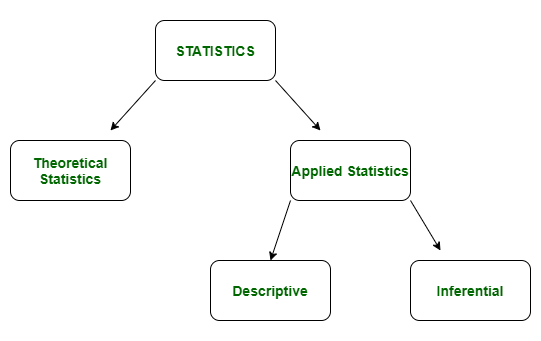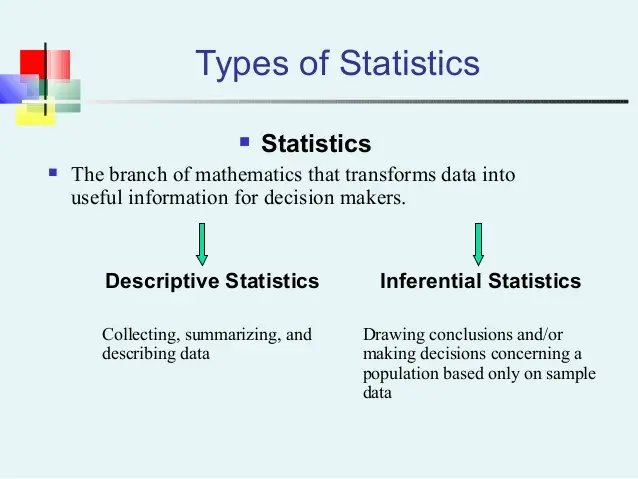
In descriptive statistics measurements such as the mean and standard deviation are stated as exact numbers. Inferential Statistics use data to make statements about unknown population parameters.

Flexible 100 online learning.
Descriptive versus inferential statistics. Inferential Statistics Although descriptive statistics is helpful in learning things such as the spread and center of the data nothing in descriptive statistics can be used to make any generalizations. In descriptive statistics measurements such as the mean and standard deviation are stated as exact numbers. Several descriptive statistics are often used at one time to give a full picture of the data.
Descriptive statistics are just descriptive. They do not involve generalizing beyond the data at hand. Generalizing from our data to another set of cases is the business of inferential statistics which youll be studying in another section.
In short descriptive statistics are limited to your dataset while inferential statistics attempt to draw conclusions about a population. Descriptive Statistics Both descriptive and inferential statistics help make sense out of row after row of data. Use descriptive statistics to summarize and graph the data for a group that you choose.
This process allows you to understand that specific set of observations. Descriptive Statistics Inferential Statistics. It gives information about raw data which describes the data in some manner.
It makes inference about population using data drawn from the population. It helps in organizing analyzing and to present data in a meaningful manner. It allows us to compare data make hypothesis and predictions.
Inferential statistics involves studying a sample of data. The term implies that information has to be inferred from the presented data. A sample of the data is considered studied and analyzed.
Unlike descriptive statistics this data analysis can extend to a similar larger group and can be visually represented by means of graphic elements. While descriptive statistics provide the summation of the data the researcher has actually studied whereas inferential statistics makes the generalisation which means the data provided to you is not actually studied. Descriptive statistics is the statistical description of the data set.
Mean median mode variance and standard deviation. Inferential statistics is the drawing of inferences or conclusion based on a set of observations. These observations had been described by the descriptive statistics.
Descriptive vs inferential statistics is one such age-old debate. Statistics as a field of study can be divided into two main branches descriptive and inferential statistics. Today in most research conducted on groups of people both descriptive and inferential methods are used.
Descriptive and Inferential Statistics 3 The Department of Statistics and Data Sciences The University of Texas at Austin This tutorial describes the use of SPSS to obtain descriptive and inferential statistics. In the first section you will be introduced to procedures used to obtain several descriptive statistics. Descriptive statistics are used to describe the general conditions and characteristics of the data while inferential statistics are used to draw conclusions for.
Whats the difference between descriptive and inferential statistics. Descriptive statistics summarize the characteristics of a data set. Inferential statistics allow you to test a hypothesis or assess whether your data is generalizable to the broader population.
Descriptive Statistics use numerical summaries and statistical graphs to provide key features of the collected data. Inferential Statistics use data to make statements about unknown population parameters. Descriptive and Inferential Statistics When analysing data such as the marks achieved by 100 students for a piece of coursework it is possible to use both descriptive and inferential statistics in.
Descriptive statistics describes a situation while inferential statistics explains the likelihood of the occurrence of an event. Descriptive statistics explains the data which is already known to summaries sample. Descriptive and Inferential Statistics When analysing data such as the grades earned by 100 students it is possible to use both descriptive and inferential statistics in your analysis.
Typically in most research conducted on groups of people you will use both descriptive and inferential statistics to analyse your results and draw conclusions. Ad Build your Career in Healthcare Data Science Web Development Business Marketing More. Learn from anywhere anytime.
Flexible 100 online learning. Join get 7-day free trial.